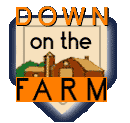|
|
|
|
 |
| ||
|
Scores Schedules Standings Statistics Transactions Injuries: AL | NL Players Weekly Lineup Message Board Minor Leagues MLB Stat Search Clubhouses | ||
| Sport Sections | ||
|
| ||
| TODAY: Monday, May 15 | |||||
| The Seven Skills Special to ESPN.com | |||||
| REPORT FILED: APRIL 27
I received two interesting e-mails last week from readers regarding player analysis. One asked me to write about the "Five Tools" used by scouts. The second message also mentioned the Five Tools, and the author wondered if perhaps strike zone judgment should also be considered as a "tool."
For the last five years, I've written the STATS Minor League Scouting Notebook. One of the methods I use when looking at prospects is what I call the "Seven Skills" Approach.
For starters, the use of the word "skill" rather than "tool" is deliberate. You can have all the tools in the world, but if you don't know how to use them, they don't do you much good.
The traditional Five Tools are hitting for average, hitting for power, running speed, arm strength, and fielding ability. The Seven Skills are similar, but somewhat different. I believe they give a more complete picture of what a player can do. They divide into four offensive skills and three defensive skills.
Offensive skills The offensive skills are hitting for average, hitting for power, strike zone judgment, and offensive speed. The first two are identical to the traditional tools approach. I use the term "offensive speed" because it is possible to have great raw speed, but be a lousy baserunner. Conversely, some guys aren't overly fast in the 40-yard dash, but know how to run the bases with aplomb. Of all the offensive skills, I think strike zone judgment is the most important. When I'm looking at a prospect's stat line, often the first thing I look for isn't batting average or power. I look at the ratio of strikeouts and walks to at-bats, as well as to each other. The standard rule of thumb is to have a walk total equal to at least 10 percent of a player's at-bats. Player X has 400 at-bats? Forty walks is the minimum decent ratio. The best hitters (and the ones with the greatest potential for growth) are usually those who draw walks and know the difference between a ball and a strike. Barry Bonds, Jeff Bagwell, Mark McGwire, Derek Jeter, Gary Sheffield, Larry Walker, these guys all control the strike zone. Sammy Sosa became an outstanding hitter, rather than just a good one, when he started taking pitches more often and stopped swinging at stuff in the dirt. There are a few exceptions, like Vladimir Guerrero and Nomar Garciaparra. They don't walk much, but have such tremendous bat speed and hand-eye coordination, they don't need to. Both are contact hitters and have very low strikeout rates. Alex Rodriguez is another interesting case. His walk rate is marginal, but his strikeouts aren't excessive for a power hitter. One thing you will note about all the great hitters: none of them have bad strikeout/walk/at-bat ratios. None of these guys has 30 walks and 130 strikeouts a year or anything like that. Defensive skills The defensive skills are range afield, fielding reliability, and throwing utility. Scouts usually consider fielding as a single category or tool, but I like to separate range and reliability. Some guys have tremendous quickness and athleticism, and get to more balls than their counterparts. But that doesn't mean they actually handle the ball reliably once they get to it. Conversely, some players are very sure-handed, but have limited mobility. Ideally, of course, you want both, but that is often a rare package, especially in minor league players. In the minors, the best defensive prospects are usually the guys with terrific range afield, even if they make a lot of errors when they are young. Scouts figure, and they are usually right about this, that the kid infielder who gets to everything within 50 feet has more potential value than a stick-in-the-mud guy who doesn't make mistakes, but can't get to many balls. Reliability can be improved through hard work and repetition, but range itself tends to be organic. In this sense, "range afield" actually is more of a traditional "tool" rather than a skill. "Throwing utility" is an awkward term, but it tries to make the point that arm strength isn't necessarily useful in and of itself. You may have a cannon arm, but if you throw everything into the seats, it doesn't help much. The most effective arms are usually the most accurate. Of course, a player with the best "throwing utility" has a strong and accurate arm. The more skills a prospect has, the more use he will be to his team, and the better his chance of developing into a useful player. That sounds obvious, but a lot of people in the baseball world still don't look at it that way. Athletic ability and baseball skills are related, yes, but they are not the same thing. Teams that realize that have an advantage in developing players, and can take advantage of organizations who focus more on pure athletic ability. John Sickels is the author of the STATS 2000 Minor League Scouting Notebook. You can email your questions to him at JASickels@AOL.com. | ALSO SEE Down on the Farm archive  | ||||
